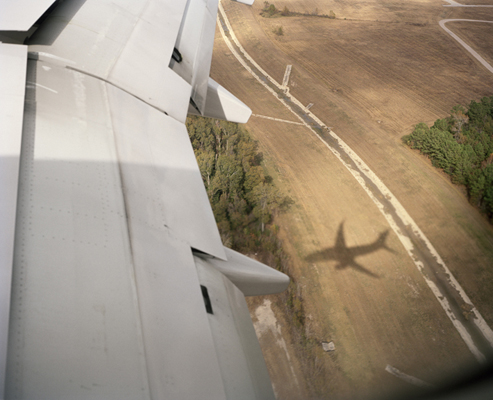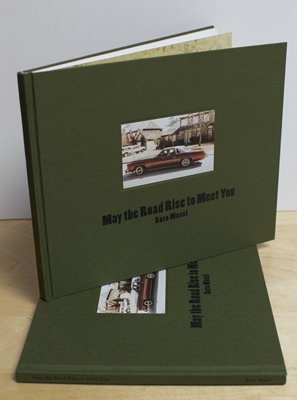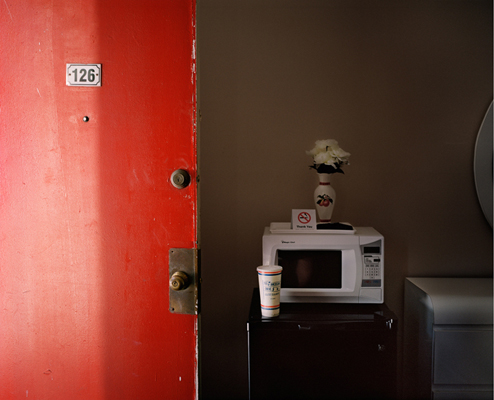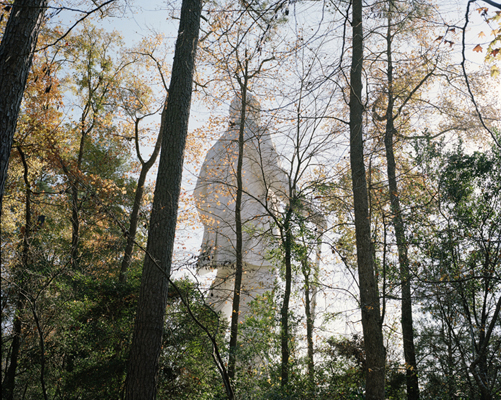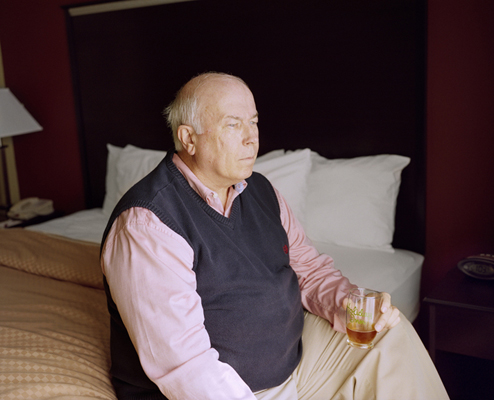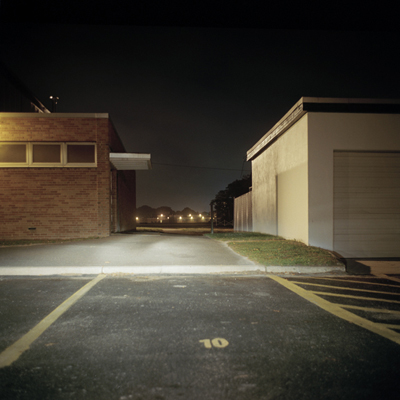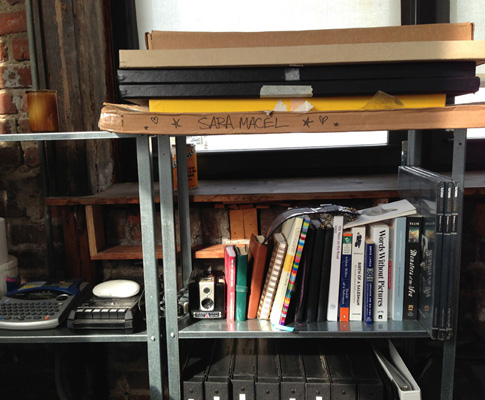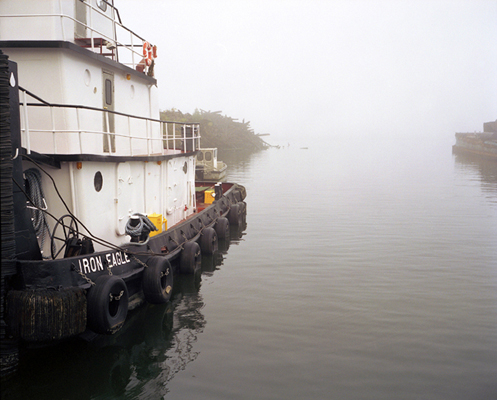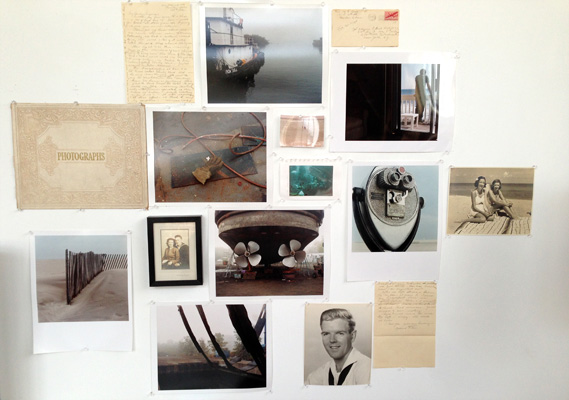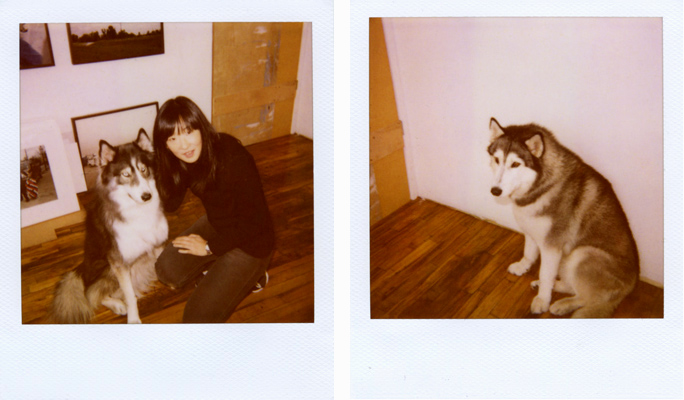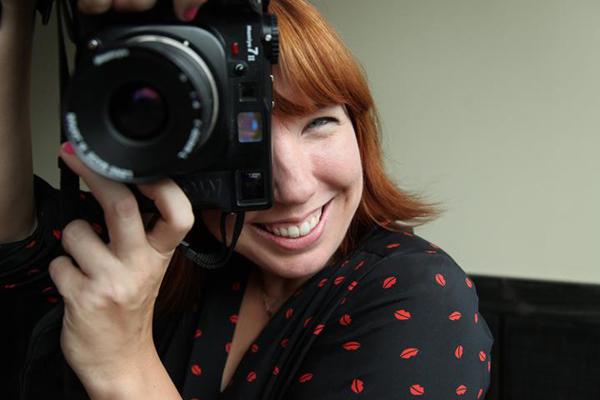A CONVERSATION WITH SARA MACEL
This week I got to visit with emerging photographer Sara Macel at her Williamsburg studio. An MFA grad from School of Visual Arts, Macel gave me a first hand look at her provocative series May The Road Rise To Meet You, as well as her on-going project Kiss & Tell and a new series of work whose working title is What Did the Deep Sea Say.
JK: Your studio is awesome! How did you manage to come by this?
SM: For about a year after grad school, I was working out of my tiny, windowless home office and holding studio visits at bars. One day at my desk, I just reached my breaking point and searched on Craigslist for studio spaces out of pure frustration. This was the first place I found. It’s a 5 minute walk from home through Cooper Park, and has more windows than my entire apartment (which only has 2, so not really saying a lot). Around the same time, I received the Aaron Siskind Individual Photographer’s Fellowship grant, so that has helped me afford such a great workspace. The studio and the grant really changed my life in terms of making it possible to continue to make new work. The grant is awarded every spring, and I highly recommend all photo-based artists to apply: http://www.aaronsiskind.org/grant.html.
JK: Can you talk about your project May The Road Rise To Meet You? I think it’s kind of crazy that Bruce Davidson told you to pursue this! And then, also having Tina Barney mentor you through the project.
SM: After undergrad at NYU Photo, I spent two years working for Bruce as his studio manager. He and his wife Emmy love looking at images and were great about looking at my work and talking about my motivations. At the time, I was making all these road trip photographs taken along the route from New York to Texas. I thought the project was about tracking where I came from to where I live now, and Bruce was the first person to suggest I switch gears and make a project about my dad’s life as a traveling salesman instead. It took a few years of letting that idea mull around in my head before it became my focus. What the project became is much more abstract than what Bruce originally suggested, but I really do credit him for planting the seed, so to speak.
And Tina Barney’s help came about as part of SVA’s thesis mentorship program. I would walk over to her gorgeous little apartment off Gramercy Park with my big stacks of prints once a month to get her feedback. The apartment was so clean and white that I was always worried I’d mess it up. Tina was awesome though. One tough cookie. And a really insightful, soulful person. She just got what I was doing right away and was a huge help in keeping me on track. I got some advice during the creation of MTRRTMY to make it more literal about my dad’s life on the road, and Tina gave me the license to be more abstract and focus more on the emotional qualities of the road and less on his life.
JK: So, when you your were working on this series, you knew that you would be creating a book. Did you storyboard your shoots?
SM: Ever since I was a kid, I loved to draw, and storyboarding ideas for photographs is something I’ve always done since I started taking pictures. So, yes I definitely would do that in planning certain shots, but a lot of it is just scenes that happened in the moment. In terms of planning the sequence of the book, I made small 3×4 inch prints of everything and made a couple different book dummies throughout the creation of the project.
JK: Why was it important for you to make it into a book?
SM: I love books. I collect photo books. When I think about the end goal of most of my projects, I see them not just as big gorgeous prints, but as carefully designed books. This project specifically made sense to have the narrative flow of a book since it is about a journey that I went on as a photographer and the weird mash-up of my dad’s life story and my feelings about him and about the road and our different versions of America. Some of it is real and some of it is made up but in the end, it’s what me and my dad want his life on the road to be remembered as.
JK: I really love the book, but I also love looking at the large prints. I enjoy seeing the details of some of the images like the one of the pink stairwell, where we see your sneakers in the mirror or the one of the interior shot of the hotel room with all these objects from different time periods.
SM: Thanks, that’s nice to hear. The book has gotten some attention, which is fantastic. But it’s nice to hear that the individual images can be appreciated on their own as art objects. I recently started working with the amazingly talented Matthew Baum for exhibition printing. Matt taught me digital printing at SVA and besides being a wonderful artist himself, he started his own print lab called Big Thumb Printing. He’s the best.
JK: I also find your images incredibly enigmatic and mysterious. There’s a certain quality about this work that seems to ask more questions rather than getting any answers.
SM: I love that! Thank you. Someone once told me if your work doesn’t scare you, you aren’t trying hard enough. I don’t think my stuff is that provocative, but it definitely acts as a form of therapy for me. I just like leaving things open to interpretation and keeping some cards close to my vest.
JK: You talked about the role of man in your work – generally, it’s something that is subtly present in all your work and spans different generations of men – why do you think you’re drawn to this subject?
SM: Having grown up in a house full of women, I’m so curious about men and how their brains work; by what is it to be a man; and how that definition has evolved from one generation to the next. I’ve been with my boyfriend for almost 12 years. I think being so connected to one person and having the privilege of being such an intimate observer of his life has hugely influenced my work. I’d love to do a project on him, but he’ll have none of that. So I think my fascination with him worms its way into my work in subtler ways.
JK: Let’s talk about Kiss & Tell. How did this project come about and how has it evolved?
SM: Kiss & Tell began years ago when we first started dating as my way of dealing with monogamy or maybe find a harmless loophole. It was such a fun, almost intimate experience to meet with someone and tape-recording their story about a place that person had sex or made out or whatever the case may be. And the act of going to the place to make a photograph and editing the story down for the book vicariously lets me turn someone else’s story into my own.
More than my other projects, K&T is based on such a simple, almost gimmicky premise: tell me a story about a kiss. For that reason, it has become the project that refuses to die. There’s always more stories to tell and more people to contribute. Over the years, whenever I’m stuck or can’t think of ideas, I go back to K&T because it is so fun to work on and keeps me shooting.
Right now, I’m working on designing a book version of Kiss & Tell, along with a blog where I’ll be asking viewers to anonymously contribute their own stories and images.
JK: One thing we didn’t discuss was the commercial world of photography – which is part of both our backgrounds – for you personally, do you have an interest in that world? We both know tons of photographers who straddle the commercial/ art line, but do you think that would work for you?
SM: Definitely, yes. In the past year, I’ve begun shooting more editorial and advertising work and am always looking to work with new clients. It’s really exciting, after spending years as a producer, to now be the person behind the lens. That was always the goal. But I love teaching and, at the end of the day, it’s really all about making time and money for personal work.
JK: I noticed you have Words Without Pictures – I have that book too. I’m going to ask you two questions from that book- one which is about teaching photography as that is something you do as well. “What are some of your objectives as a photo educator?” and “What do you see as being in store for the medium?”
SM: I have been so lucky to have amazing teachers and mentors over the years, so my biggest goal as an educator is trying to continue in that tradition of teaching visual literacy. It’s important to know art and photo history, so I emphasize that in my classes and suggest artists for students to look at based on their work. You have to know what came before you in order to figure out where you fit into the visual landscape and what you can offer to the conversation. I also like to do a class that I call Photo World 101 that gives more real world advice on getting internships and jobs and what are the best places to submit your work when you’re just getting started.
As for your second question, have you heard of the iPhone app called SnapChat? It allows users to take a photo, set a timer, and the recipient can only view the photo for as many seconds as were set on the timer, and then the image is gone forever. It’s the anti-photograph in that it was created not to preserve a moment in time but to destroy it. The idea of photography as something impermanent is pretty fascinating.
JK: I have not heard of that, but, yes, it is fascinating. It gives me chills too. I’m definitely going to check it out. Okay, getting back to your work – what about this new work about unrequited love and abandoned boats?
SM: It’s still really new and I’m still sorting through the ideas and figuring it out. I began shooting the abandoned boats a couple years ago, but they aren’t easy to find, so I put the project away for a while. At the time, I didn’t know if it would turn into anything, but I’ve always been drawn to the ocean and anything related to it. After the dad project, I turned to my mother’s side of the family (at her suggestion- I think she felt a little left out!). I have these great old portraits of my grandpa in his sailor uniform and my grandma lounging on the beach. There’s a much larger backstory involving the war and my grandma being close with the family priest, who happened to be very handsome. The priest married my grandparents and eventually also buried them when they were all old and gray. Now, they all rest in the same cemetery and all that’s left are these photos and letters and my own ideas about what their story really entailed. The title, “What Did the Deep Sea Say,” is a Woody Guthrie song about a sailor lost at sea and the love he left behind. I see the rusted boats as a metaphor for the sailors like my grandpa and the foggy boatyards as cemeteries themselves. And I love the idea of an old abandoned boat as a symbol for love that has been neglected or lost.
JK: Who are some of your favorite photographers? Or people that have influenced you? When I look at your work, some people that come to mind are William Eggleston and Alec Soth.
SM: Well, you nailed it. Eggleston and Alec Soth are my guys. But I also love Joel Sternfeld, Ralph Eugene Meatyard, Sally Mann, Justine Kurland to name a few. Christian Patterson makes such smart and interesting work. And I love Maureen Drennen’s photographs. But if you were to ask me who the greatest living photographer is, I would hands-down say Philip Perkis.
JK: I had fun today! I’m glad I got a chance to come by your amazing studio and see your work in person.
SM: When you walked in with your fur-lined hooded coat holding the leashes of those two gorgeous wolves, you look liked some kind of superhero or mythological character! The pleasure was all mine. Thanks for the great conversation.
NOTE: Macel will be hosting the Hurricane Sandy Relief Pin-Up Show at her studio at 340 Morgan Ave, studio 7 on Nov. 30th from 6:30-9. $20 for 11×14 prints, $40 for larger prints with free beer and donations taken at the door. 100% profits go to relief efforts for those who are recovering from the hurricane. For more information please go to www.saramacel.com
To see more of Sara Macel’s work, go to www.saramacel.com
Tumblr – saramacel.tumblr.com
Twitter – twitter.com/saramacel
Facebook – www.facebook.com/saramacel

